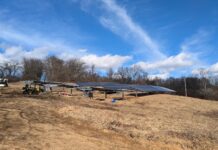When hunters see a deer, they envision a big buck. Non-hunters are more likely to imagine a costly deer-vehicle collision or denuded backyard shrubs. So it will probably surprise many readers to learn that deer farming is big business.
Yes, landowners in many states raise fenced-in deer as domestic livestock. The reasons for raising deer in large pens are primarily financial. Farmers sell everything from antlers, velvet, urine, and venison to controlled hunts and breeding stock.
Bucks with trophy antlers can fetch prices in six figures.
Wildlife biologists worry, among other things, that captive herds could spread diseases to wild populations and jeopardize the health of an entire state’s deer population. Farmers counter that captive herds are healthier than wild herds.
Control issues
Though deer are native wildlife, legislatures of many states have given control of deer farms to state departments of agriculture. The argument goes that agriculture departments have the expertise to regulate deer as livestock, maintain herd health, and inspect slaughtered meat.
On the surface, that’s a reasonable perspective, except that white-tailed deer are not domestic livestock. They are wild animals that roam free.
This is the crux of the “fair chase” doctrine — that deer and hunters are fairly matched. Hunters may have weapons, but deer have speed and keen senses.
Deer farms that permit hunting inside fenced-in areas violate this premise. When a deer gets to the fence, whether the enclosure is 40 acres or 1,000 acres, the chase is over.
Such hunts appeal to hunters with too little time and skill and too much money.
Herd health
Of even greater concern to deer biologists is the long-term health of deer herds.
Consider a recent outbreak of chronic wasting disease at an Iowa deer farm. CWD attacks the brain and nervous system of infected deer, elk, and moose. It is ultimately fatal, there is no way to test live animals for CWD, and there is no known treatment or cure.
There is also no evidence that CWD can be transmitted to humans, though it is recommended that infected animals not be eaten.
Deer are by far the most important game species, especially in eastern states, so preventing CWD is essential to every wildlife agency’s mission.
According to an investigation by the Indianapolis Star earlier this year, state and federal officials in Iowa killed 356 deer at a deer farm suspected of harboring an outbreak of CWD. Of those 356 deer, 284, or 79.8 percent, tested positive for CWD.
This is a deer biologist’s worst nightmare. If just one infected deer escaped and joined a wild population, the disease could spread and jeopardize the health of deer in an entire county or even a state.
Economic impact
Deer hunting fuels local economies, especially in rural states. In West Virginia, for example, deer hunters spend more than $230 million annually.
If the deer herd is crippled, rural economies will crumble. A healthy deer herd is essential to the economic health of rural communities.
Lobbyists for deer farmers, on the other hand, want to loosen regulations to make deer farming easier and more profitable. Furthermore, the Star investigation revealed that the U.S. Department of Agriculture paid the deer farmer more than $900,000 for the lost deer.
That’s taxpayer money, not wildlife agency funds. It seems to me the deer farmer should have been held responsible for his losses.
Bad policy
Domesticating deer is bad policy whose sole purpose is to make money from wildlife. In an Oct. 1 Op-ed in the Charleston (WV) Gazette, Charly Seale, president of the North American Elk Breeders Association, wrote in his opening sentence that deer farms, “open new paths to economic growth.”
Departments of agriculture see deer as an economic commodity. That’s how they view all aspects of farming, and that’s fine. Farmers are in business to make a living. But deer are not livestock. Wildlife belongs to the people of the state.
State wildlife agencies, on the other hand, treat deer as renewable resources to be responsibly and sustainably managed on a statewide basis. I think wildlife agencies have the better approach.













Deer farms need to be banned and depopulated. There have been far too many escapes of infected deer. Trucked-in deer are believed to be the source of Wisconsin’s scourge of relentless CWD spread. Farmers can raise other animals or crops that do not spread fatal, economy-damaging disease.